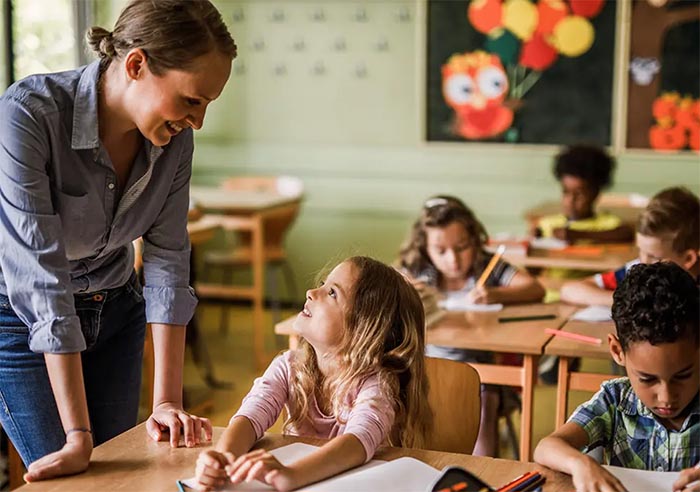
Teacher and student emotional and mental health needs must be addressed before academic gaps, experts say
From The Hechinger Report
By Jackie Mader
January 13, 2022
At the start of the school year last August, I spent several days visiting a first-grade classroom in Austin, Texas, to see how the coronavirus pandemic was impacting teaching and learning after nearly two years of disruption. The academic impact was exactly what experts predicted: students were all over the map in their reading abilities. But I was struck by some less widely reported trends their teacher shared with me, like the pandemic’s impact on non-academic skills, including social-emotional, fine and gross motor skills. Many students were struggling with things like being able to use scissors, work independently and resolve conflicts.
As the pandemic trudges on, here are three strategies experts recommend to address student (and teacher) needs, a prerequisite for closing academic gaps:
1. Acknowledge the trauma students have faced
In the past 22 months, many children have faced hunger, housing insecurity, the death of parents and family members and isolation. Failing to address this could only hamper efforts of teachers to catch students up, said Cailin Currie, a developmental psychologist and lead researcher for a social-emotional (SEL) program created by the Committee for Children, a nonprofit focused on social-emotional learning. This could mean adopting a trauma-informed approach to working with children or offering more counseling services, as some schools are doing. Some states, like Colorado, published a guide for schools encouraging them to offer social emotional support for students and staff. “The pandemic is adding stressors to kiddos’ lives, and depriving them of positive experiences that support their development,” Currie said. If you understand that kids are coming in having dealt with a lot at home, and provide them a place where they feel safe, confident and a sense of belonging, “that’s really going to help,” she added.
2. Explicitly teach children conflict resolution and other skills, even those they are already expected to know
Students often learn how to behave in classrooms and get along with peers in early childhood classrooms. These social and behavioral skills, like how to follow classroom routines and get along with peers, must be explicitly taught to kids who missed school and even to older children who mastered these skills previously, Currie said. “How can you learn if you don’t know how to pay attention? If you don’t know how to control your impulses, if you don’t know how to kind of persevere through those daily challenges?” she said. “If you want to kind of, jump start learning and focus on learning, ignoring SEL won’t get you there any faster.” It can help to teach kids how to name their feelings, validate and normalize those feelings and focus on what they can control, said Katie Dorn, a licensed school counselor and therapist and the CEO and co-founder of EmpowerU, which offers a social emotional learning program for elementary and secondary students. That practice “really gives [students] that confidence that they can manage the hard things, instead of being afraid,” she said.
3. Support the emotional needs of teachers
Supporting staff is even more important this year, experts say, as teachers are facing an enormous task. That could mean providing mental health resources, using federal funds to hire support staff or including educators in discussions and decisions around the school. For Heather Miller, the first-grade teacher I interviewed, the work has been relentless. “My brain is constantly going over how I’m going to help the kids,” she said late last year. At the same time, Millerhas dealt with the same woes as other working parents with young children. By mid-October 2021, she had used up her paid sick leave taking care of her toddler, who contracted several viruses from his child care center and had to quarantine after a positive Covid-19 case at the center. “It’s just reality right now,” she said. “It’s really hard.”
Experts say this is a common experience of teachers. “I’ve never seen educators more exhausted, overwhelmed, depleted and really unsupported than now,” said Dorn of EmpowerU. “If there’s an expectation that they’re going to teach [social-emotional learning], we need to be attending to their own mental health and supporting that,” she added. Brooke Mabry, strategic content design coordinator for NWEA Professional Learning, said it’s also important to be realistic and thoughtful about remediation plans because teachers will ultimately bear the brunt of the burden to help close academic gaps. “I’m worried that if educators put pressure on themselves to achieve these unrealistic goals this year, or if leaders apply those unrealistic goals to educators, then what’s going to end up happening is we’re just going to cause more trauma and more frustration,” she said.
Photo: understood.org
Read this and other stories at The Hechinger Report

